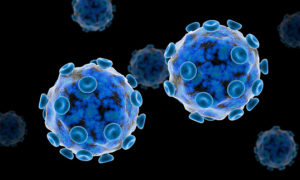As the Zika virus continues to spread, and evidence for its role in the pathophysiogy of microcephaly and Guillain-Barre continues to grow, understanding the natural history of the virus is paramount. Researchers at the Johns Hopkins University conducted a systematic literature review and pooled analysis of all publically available case reports of Zika infection. Only 20% of the 25 individuals with confirmed infection developed symptoms. On average, if symptoms appeared, they did so within 5.9 days (95% C.I., 4.4 to 7.6). Seroconversion occurred 9.0 days after infection (95% C.I., 7.0 to 11.6), and cases were viremic for 9.9 days (95% C.I., 6.8 to 21.4). In simulated calculations, screening blood donors for symptoms and the blood supply for antibody to Zika will only decrease the risk of transfusion-transmitted infections by 7% and 30%, respectively. Alternative methods such as direct virologic testing for Zika virus in areas with high incidence, and conservative deferrals of blood donors for travels to endemic areas, will likely be needed to ensure a safe blood supply.
Reference:

